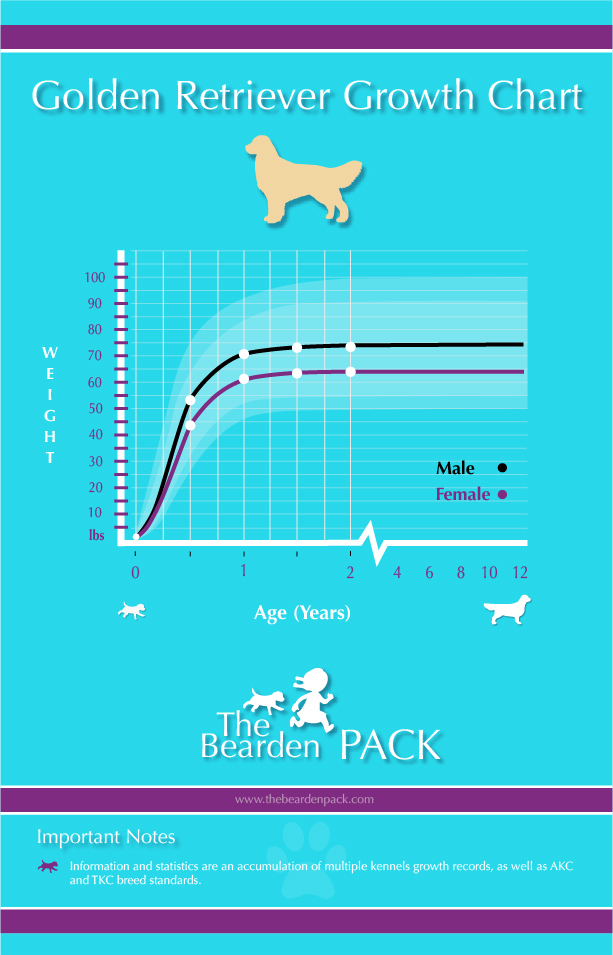A while back I created a post on the average size of a golden retriever. That post was dedicated to the weight and height of a golden retriever at their full adult size. Many puppy parents like to know how their golden retriever puppy is growing compared to the average. So we did some research through the past couple years, along with some other kennels (especially McIntire Mountain Goldens) and created our own golden retriever growth chart.
Your golden may or may not fall outside of the average. It can however be a useful tool to gage the growth of your own golden retriever. It is important to note that English standard goldens may often fall on the lower range of growth as they can be smaller dogs by weight and height. That does not mean that they can’t grow at the same rate. It is also important to note, many pups and even adult dogs may sit above and below our chart. In most of those cases parasites, and genetic diseases will skew the results.
To obtain this information I studied my own kennel, as well as a couple other kennels, and used other resources such as the Hovan Slow-Grow Plan. Also we used the golden retriever standards from AKC and TKC. This is no way a full scientific study and is only for educational purposes.
This chart is a work in progress. I just put it together rather quickly and plan to make a lot more changes as the time progresses. Eventually I will add more statistics and create two different ones, one for male and one for female.
It would be much appreciated if puppy parents and especially kennels would like to send me their golden retrievers weights at one month intervals till two years of age. This would allow me to create a more accurate growth chart.
Golden Retriever Growth Chart
To understand this chart, I used two lines to delineate male and female average weight. The highlighted area outside the line represents where most golden weights will fall. As mentioned above golden retriever weights outside that zone is often due to parasites, illnesses, or obesity. Occasionally you might have one that is outside that area and is perfectly normal.



Hi Tim – I was just browsing a bit and saw this chart. Yes very helpful. My Maddox (Junior) is going to be 2 years old at the end of this month and he is weighing in about at what you are saying on here, he is on the big side, as you saw last March (16 months) at IABCA show, now he is fully grown. Ava turned 6 months and just weighed in at 46 lbs. looks pretty much like your chart. This chart is really helpful especially when trying to keep their weight on track for them. Its great to be able to compare. Thank you and Best Regards. Tracy ( also have seen the Hovan slow grow chart helpful too)
Thanks for commenting. Glad it was helpful. Someday I will update it, as I have neglecting this post. Hope all is well with you and your family.
What is your information on weights of English Creme Retrievers? Do they tend to be smaller in size and weight?
Most average the same in weight. However, there are some that are smaller by about 10 lbs and by one inch. I have seen a couple English standards that were even smaller than the norm, but they would be faulted even by English Standards.